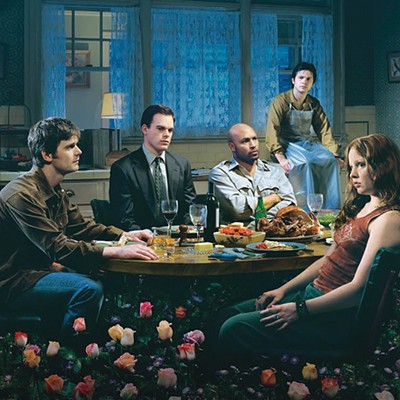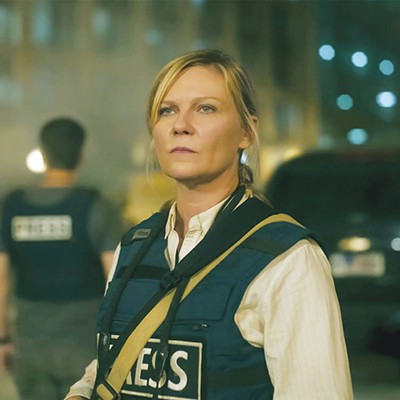I dig Terrence Malick. Rarely have we seen such a director go out on a limb, taking chances few artists dare to make. Since his classic Badlands, starring Martin Sheen and Sissy Spacek chronicling Charles Starkweather's 1958 murder spree, Malick has made only three other movies (Days of Heaven, Thin Red Line and New World), all non-linear cinematic sonnets hailed and scorned by fans and critics alike. With Tree of Life, Malick stirs the pot. Even if this movie sucks, long live Terrence Malick for his visionary style.
Tree of Life won the Palme d'Or award at Cannes, giving credit where credit is due. I understand art and messing with it, deconstructing it and making the big artistic statement, but the two-hours-and-18-minute runtime makes this film an endurance test. Cinematically, Tree of Life is an enthralling, mesmerizing film. Meticulous to the hilt, everything shines on the technical side of things. But after a half an hour we get it. We know what this film is about and we also know what it's not going to be about. The trip it takes isn't so hard to follow, it's just image after image in Malick's surreal photogenic style. This is one of the most beautiful and intensely filmed bore-fests I have ever seen.
What poses as a plot is the story of the trial and tribulations of a 1950s Texas family. The film focuses on the eldest son, Jack (Hunter McCracken), through the innocence of childhood to his disillusioned adult years. Pampered by his mother (Jessica Chastain), he tries to reconcile a complicated relationship with his father (Brad Pitt). The family experiences the loss of a child. Happiness and pain is played out through everyone's growing emotional despair. As an adult, Jack (Sean Penn) finds himself a lost soul in a corporate modern world, seeking answers to the origins and meaning of life while questioning the existence of faith.
{youtubejw width="560" height="349"}WXRYA1dxP_0{/youtubejw}
I knew to give into the style immediately. Tree's editing is fast and furious while the narrative meanders at a dreamlike pace. The flick has the ability to reel you right in at the beginning, but soon begins to detour. Roughly 20 minutes in, the movie shifts gears to a vision of the world, not unlike 2001: A Space Odyssey. Awe-inspiring images appear with massive intensity, including a colorful nebula expanding in outer space, cells multiplying, shimmering jellyfish, volcanic eruptions, glimpses of dinosaurs and bubbling primordial ooze. The link between Jack's story and the film's prehistoric daydream is never clear, though its essential meaning is clearly expressed. Conveying a sense of birth, this flick urgently questions, yet also accepts, the presence of God in a fallen world.
The dichotomy within Pitt's character becomes clear early in the film, as he is moved by classical music yet tormented by his post WWII era temperament. Who could've conceived that Brad Pitt would star in a movie slower than Benjamin Button? If I had my druthers, I would choose this artistic creative pastel of ambiance and wonderment over the silly concept of someone aging backward.
Tree of Life's presentation sometimes resembles a poem and sometimes a symphony. Most often, it's a dreamlike prayer weirdly detailing memories about growing up in Texas during the '50s with scary yet powerful reminders of a suburban domestic and "safer" era, albeit one when cigarettes helped digestion and spraying DDT from trucks on kids parading down the street was just good fun.
Defying true definition, this is a beautiful movie but, sadly, it's easily forgettable. I thought that the images in Tree would come at me, sparking newly generated thoughts about my youth, but instead it had the opposite effect. I can hardly remember the movie at all - it's a blur. Not a bad one, but an artistic blur.
TOL doesn't make you think, it makes you feel, but only as an afterthought does it conjure feelings. That's not necessarily a bad thing, but it seems like torture to sit through a movie in a theater, only to get to your true feelings later. My favorite part was listening to other moviegoers talk in the corridors afterward. No one seemed to have seen the same film. As I thought to myself, "What a bunch of morons, they didn't get it," it dawned on me: there's nothing to get, it's all in the interpretation. One thing for sure, Tree of Life brilliantly articulates the way we remember in cinematic terms.



















